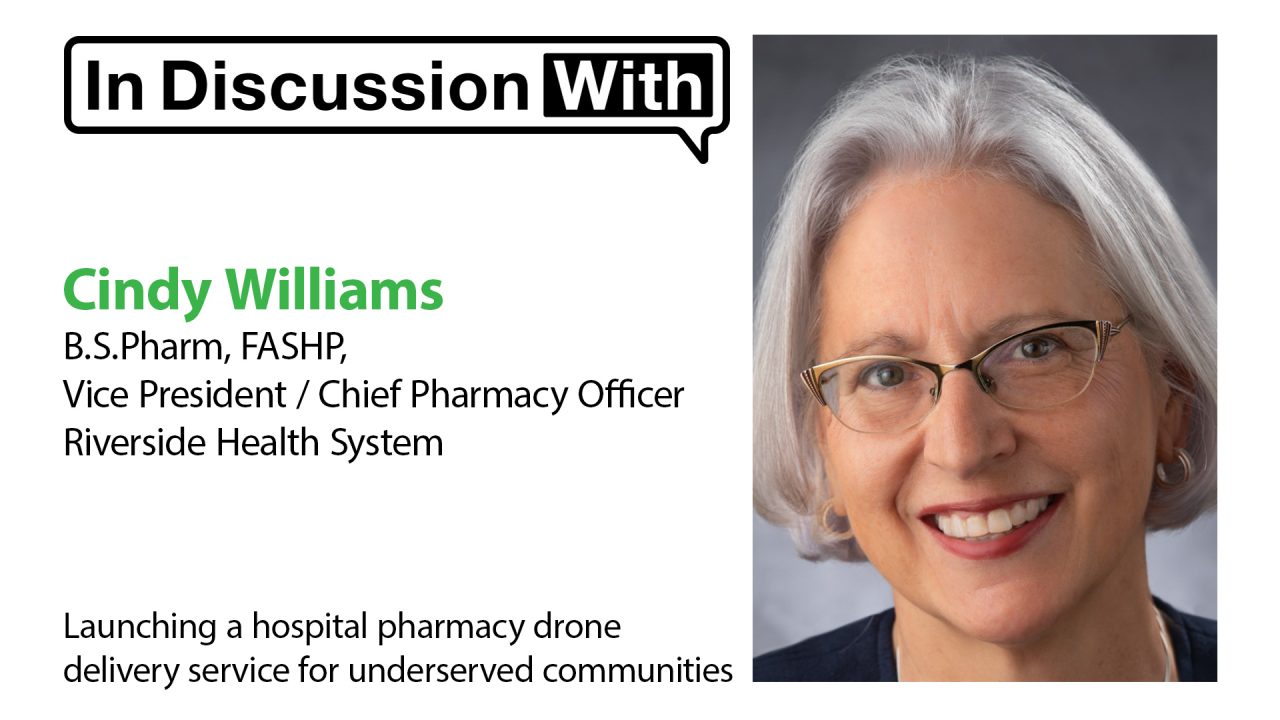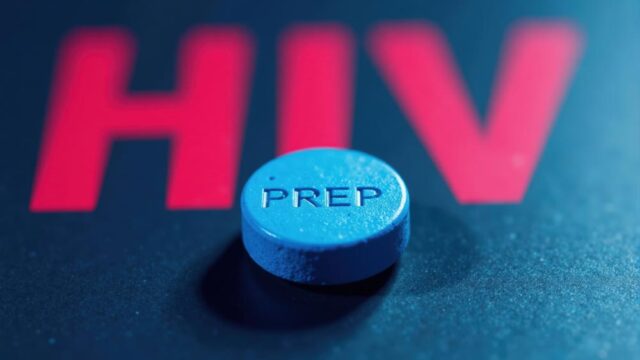Advertisment
Launching a hospital pharmacy drone delivery service for underserved communities

Cindy Williams, Vice President and Chief Pharmacy Officer at Riverside Health, Virginia, USA, is leading a multidisciplinary project to implement medication delivery by drone in order to improve health outcomes in under-served communities. In this series of short videos she describes how the project was funded and operated and what has been achieved so far.
Could a drone delivery service for medicines improve healthcare?
Riverside Health is located in the mid-Atlantic section of the United States, in Virginia. It serves a mixed population, including some remote rural communities. One primary care clinic is situated on an island in the middle of the Chesapeake Bay, some 17 miles from the closest point on the mainland. “It’s very challenging to provide care for those individuals who tend to be lower income and medically underserved”, says Ms Williams. The idea of using drones to deliver medicines arose from the realisation that some of the coastal communities have no public transport and have poor access to basic health care, including prescription medicines.
The basic premise of the project was that drone-delivery of medication to vulnerable populations would result in better health outcomes.
The funding for the project came from State and federal grants, starting with a small grant from the State of Virginia. In addition to hospital personnel, the project team included representatives from the two counties involved, a drone vendor, DroneUp, and two people from a research group at Old Dominion University, both of whom had career experience of working at NASA.
Challenging logistics of a drone delivery service for medicines
The drone delivery service had to operate within a number of restrictions (on the types of medicines that could be carried) imposed by the Federal Aviation Authority (FAA), the Environmental Protection Agency (EPA) and the Virginia State Pharmacy Board. For example, the Pharmacy Board did not want the drones to carry medicines that may be damaged by wide temperature variations or Drug Enforcement Agency (DEA) controlled medications that might have the potential for diversion and abuse, such as opioids.
The next step was to identify a therapeutic area where improvements in health outcomes were readily demonstrable. Cardiac conditions, COPD and asthma were conditions of concern in the Eastern Shore area and hypertension was chosen for the pilot project as changes in blood pressure would be easy to record.
During the pilot phase, dispensed (filled) prescriptions for these patients were delivered directly to patients’ homes. In order to comply with FAA regulations, in the first instance, these had to be with in a two-mile radius (‘visual line of sight’) of the hospital. Once suitable patients had been identified, the drone partner (DroneUp) carried out a geo-mapping analysis to look for potential barriers to drone delivery such as power lines or tree canopy.
A larger drone was required to deliver medicines to the Family Practice clinic on Tangier Island, 17 miles away. This larger drone has to land, is unloaded by staff at the clinic and then released for take-off by the press of a button.
How does a drone delivery service for medicines work in practice?
The drone used for initial deliveries was able to fly approximately 20 miles and could carry a total weight of about three pounds. Federal Aviation Authority (FAA) regulations limited flights to destinations within a two-mile radius of the hospital.
Medicines are packed in purpose-designed boxes and loaded on to the drone. The GPS coordinates for the patient’s home are entered, then the drone takes off from the hospital drone port and goes up to about 300 feet above ground. Once it reaches the destination it descends to an altitude of about 80 feet (~ 25 metres). It then lowers the package slowly on a guide-wire and when the package reaches the ground, the hook disengages from the top of the box and the guide wire is retracted. (See video here; 1.27 onwards) The drone then goes back up to 300 feet (~100 meters) and returns to the hospital drone port.
Security of deliveries was an important issue for this project and patients had to agree to be at home at the appointed time to receive deliveries of medicines.
What are the next steps for drone delivery of medicines?
Routine deliveries of medications have been made every 90 days to project patients for 18 months now, and during the process much has been learned. Co-ordination with other users of local airspace was important. This involved tight communication with the emergency medical response personnel about when emergency helicopters might be landing at the hospital helipad and collaboration with local crop-dusting services to avoid clashes. Another thing that the team learned is that drones cannot fly in windy conditions.
During the first phase of the project stock medications have been delivered to the clinic on Tangier Island. In addition, the drone return journey has been used to carry blood samples for diagnostic testing. This has meant that same-day results can be provided to the clinic. Hitherto blood samples have had to be sent by ferry or carried by a physician on his monthly visit.
Lessons learned
- Two other similar projects are in progress, one in Salt Lake City, Utah and one in Charlotte, North Carolina, but neither of them focuses on rural communities in the way that this project does.
- Seed money from the federal Government was critical for rapid progress. “We were able to do far more deliveries in a short period of time than [others] were able to do in several years because we had the ability to bring together a really strong collaborative team to, I would say, jump start … the process”, says Ms Williams.
- Much has been learned about FAA waivers and the value of advocacy to change the status quo.
One of the goals of the project was to develop a roadmap for others so that they could make more rapid progress using the Virginia blueprint. This seems to be happening now – Ms Williams’ team is working with a collaborative in Maryland, helping them to go further and faster by sharing what they learned on this project.
Read and watch the full series on our website or on YouTube.





